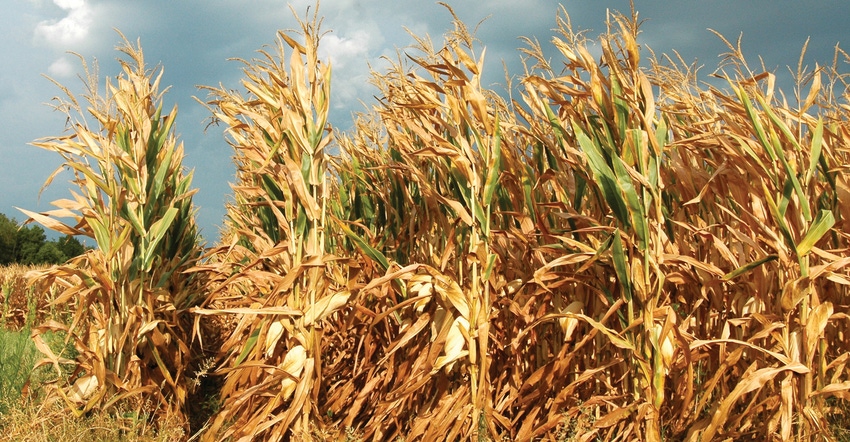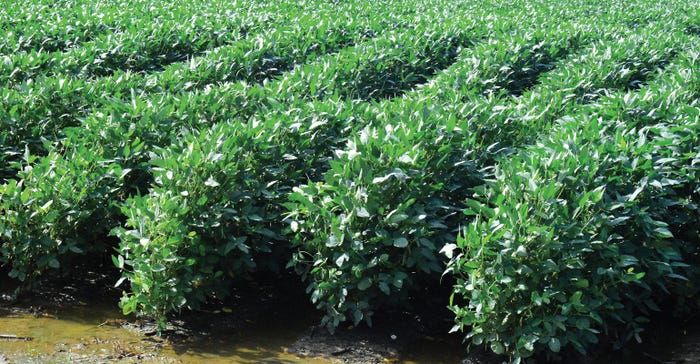November 1, 2021

Through years of testing and trials, Midsouth row crop varieties yield better and have stronger resistance to weeds, insects and diseases. By matching the right vigorous varieties with a farm’s overall environment, growers can take greater advantage of traits bred into supper seeds.
Whether its clay or sandy loam soil, flat or hilly terrain or a wet or dry climate, field types matter in variety selection. Just as important are the history of disease in soils. The types of herbicide and other GM technologies bred into varieties are also key elements for success.
With the cooler, wet conditions that hindered production across the Delta and other regions in 2021, seed types and their production were tested. The importance of planting quality seed that matched environmental conditions was magnified.
Jeremy Ross, University of Arkansas System Division of Agriculture agronomist and soybean specialist, and Brian Pieralisi, Mississippi State University Extension cotton agronomist, say yield potential and herbicide technology are leading considerations in variety selection. A close second are soil textures, topography and whether crops are dryland or irrigated. But seed selection depends on more than that.
“Other questions deal with potential salt problems in fields and nematode and disease issues observed in previous years,” Ross tells Farm Press.
Soil tests
He says soil tests are a must to help identify the fertilizer rates needed to promote better plant growth, yield and which supplemental nutrients are needed to boost production. UADA data recommends a “Medium” range for phosphorus and potassium for crop production.
 Jeremy Ross (UADA)
Jeremy Ross (UADA)
When considering a field’s disease probability, producers should first identify whether there are soilborne or foliar diseases. “For soilborne diseases, the best options for control are crop rotation and fungicide seed treatments,” Ross says. “Disease cycles can be disrupted by crop rotations and removing crop residue from previous crops by disking.
Fungicide and insecticide seed treatments pay off. “Extensive research shows that seed treatments work well for controlling early season diseases,” Ross says. “For more common foliar diseases such as frogeye leaf spot and stem diseases like stem canker, producers should select resistant soybean varieties. They may be able to eliminate a foliar fungicide application.”
Soil samples are key in addressing nematode problems. “Resistance to root knot nematode (RKN) seems to be affecting more fields every year,” Ross says, adding that researchers have identified soybean varieties with good resistance ratings to RKN.
“In the past, most of the soybean varieties with RKN resistance were mainly in the MG-5s. However, over the past five years, we have been seeing more MG-4 varieties with RKN resistance,” he says.
Soil condition may require different varieties based on their germination. “Seed germination and the accelerated aging scores provide an indication on how that particular seed lot will emerge under ideal soil conditions”, Ross says. “The accelerated aging score will indicate how a particular seed lot will emerge under less-than-ideal conditions.
“Producers should test each lot of soybean seed for both germination and accelerated aging, so they know exactly what seed quality they have for each seed they plant.”
Soybean MG recommendations have changed for the Midsouth. Varieties in the MG-3s to MG-5s are typical. “However, recent UA research shows that during the normal planting window, MG-4s have the highest yield potential,” Ross says.
Seed germination
Cotton seed germination is also a major concern, as is resistance to disease, weeds and insects. “It ‘s important to know the germination percentage on your bag of seed,” MSU’s Pieralisi says, especially if reduced plant populations are considered. “It’s printed on the label and it is critical information. For example, if you’re planting 40,000 seeds with 80% warm germination, you will likely have a stand of 32,000.”
 Brian Pieralisi
Brian Pieralisi
Pieralisi adds, “cool germination is another consideration especially in a year like 2021, where we experienced cool and wet weather. This information can be obtained from your seed company if you provide the variety and lot number. In adverse weather conditions, you may consider increasing not decreasing the population, depending on the warm and cool germ of the seed.
“Reducing seeding rates is a way to reduce input costs — but this shouldn’t be incentivized in a way that leads to a poor stand or replant conditions.”
Most growers plant varieties containing herbicide technology for over-the-top weed control application. “It’s important to consider which technology you plant in terms of controlling problematic weeds and potential for off-target injury,” Pieralisi says.
“If multiple technologies are present within an operation, the likelihood of off-target injury increases. The same applies if a neighboring farmer has a different technology planted in close proximity.”
Cotton disease management is critical. Pieralisi points out that genetic resistance in varieties is the best way to avoid yield reductions from plant diseases, along with fungicide seed treatments.
“Many of the varieties planted today are resistant to some diseases such as bacterial blight,” he says. “Regions in lower latitudes often experience target spot, which can be treated with foliar fungicides. However, early intervention is best in these type scenarios.”
Nematode control is key in cotton. Pieralisi says rotating cotton with corn helps reduce reniform nematode populations. However, RKN can still be problematic in a corn, cotton and soybean rotation. Typically, RKN exist in smaller more confined areas. “In a rotation where the prior crop is a host to reniform or root knot nematodes, a nematode resistant-tolerant variety could be a good selection in this type of a system,” he says.
Matching varieties
Most farmers know their fields and the vegetative growth and yield potential associated with their land. It’s a good idea to match a variety to a particular field. “Look at the variety growth habit, responsiveness to plant growth regulators, bacterial blight resistance, their verticillium wilt score, herbicide traits and maturity group,” Pieralisi says.
Extremely wet conditions certainly impact cotton growth. Growers should review university Official Variety Trials and on-farm variety performance data and plant varieties proven to perform in various weather conditions.
Cover crops help manage the growth environment. They can help with soil water infiltration, erosion prevention and nutrient cycling. Most growers in cover crop situations plant varieties with high yield potential with the herbicide technology that works best for their farm. But Mother Nature can alter a cover crop plan.
“The wet weather we had during the optimal planting window caused many growers to terminate their cover crops later than normal,” Pieralisi says. “Early-medium maturing cotton varieties could be a good option if planting later in the season.”
For soybeans, Arkansas’ Ross says, high quality, vigorous soybean seed is required when planting into cover crops. The same planting recommendations for normal plantings should be followed.

When planting into cover crops, one precaution involves seed-to-soil contact and closing of the seed furrow. “To ensure proper seed furrow closure, modifications to planting equipment may be needed,” Ross says.
Corn seed management depends as much on the overall environment as cotton or soybeans. Soil quality, texture and drainage, climate, availability of irrigation and herbicide technology all come into play.
Like with cotton or soybeans, new corn hybrids are packed with GM technology to help manage weeds, insects and disease. University of Tennessee Extension says corn works well in a cotton and/or bean rotation because it can enhance soil characteristics.
When rotated with one or both of these crops, corn deposits substantial residue on the soil surface, improves water infiltration and the hydraulic conductivity of silt loam soil.
If corn follows corn, fungicide may be needed to protect hybrids susceptible to gray leaf spot, southern rust or other diseases.
Tennessee is among states that require acre refuge for older Bt varieties. For more on refuge requirements and other information to help assure you’re planting the right seed for success in your farm environment, visit your seed specialist or regional Extension agronomist.
About the Author(s)
You May Also Like




